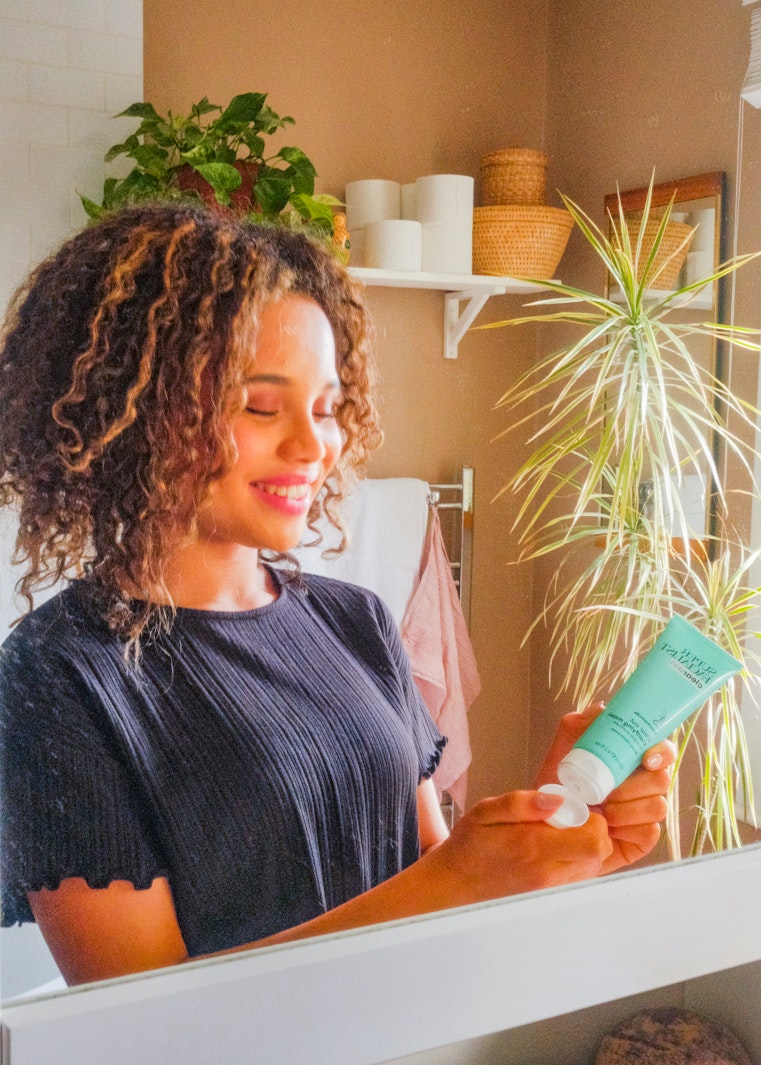
Teen skincare routine you would appreciate as a parent
Help your teen follow the right routine

Quick summary
- A simple skincare routine for teens should focus on three key steps – cleansing, moisturising, and sun protection to keep skin healthy
- Harsh products and viral trends can do more harm than good, so encourage a gentle, balanced approach to skincare
- If your teen struggles with skin concerns, pharmacists can offer advice
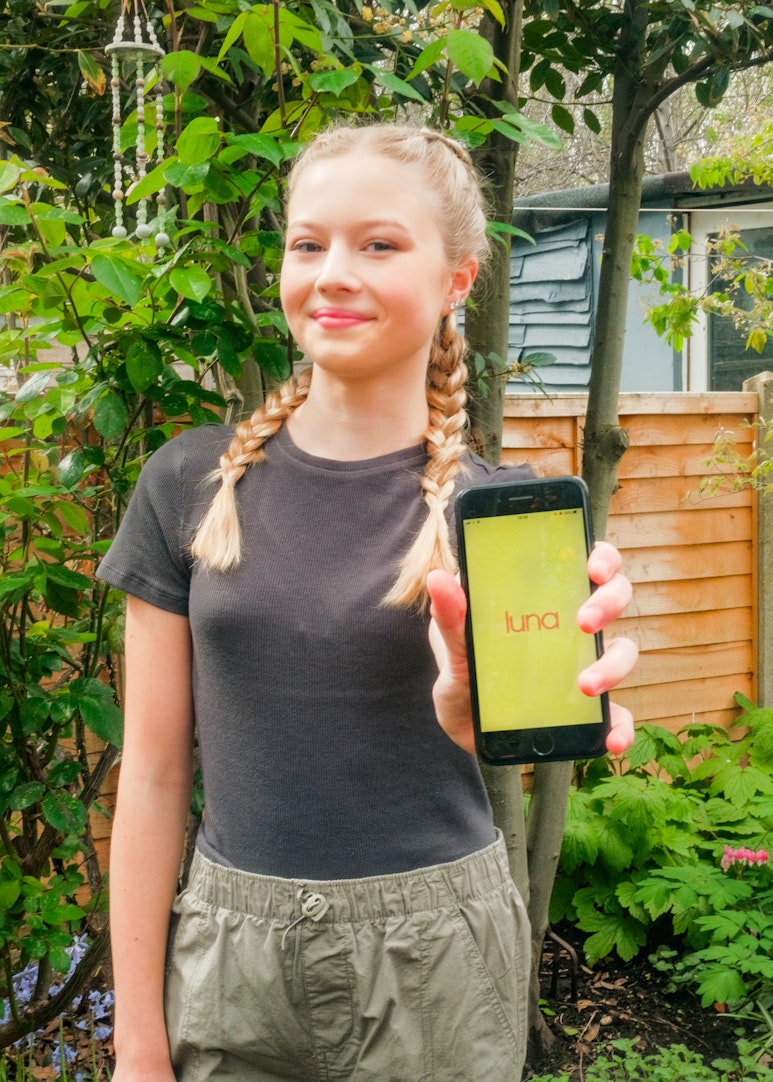
As a parent, you may be wondering how you can help your teen build a safe skincare routine, having likely been faced with so many articles and social media accounts suggesting different routines!
It can be confusing, so let’s here break it down for you in a guide that's created and verified by luna's team of medics.
During puberty, the oil glands (called sebaceous glands) become more active and start to produce more oil (sebum).
A build-up of sebum in the skin can lead to blocked pores and encourage the growth of harmful bacteria, resulting in acne.
A simple skincare routine should do three things:
- Cleanse
- Moisturise
- Provide sun protection
These three steps help maintain a healthy skin balance to prevent acne, acne marks, and sun damage.
There are, of course, other things to consider like exfoliators, spot treatments, toners, serums etc.
But ultimately, figuring out the best skincare routine will involve some trial and error, and a teen shouldn't overload their skin too soon. This can cause more harm than good.
For teens influenced by viral beauty advice that may be doing harm, this resource on navigating TikTok skincare trends provides practical guidance.
Ideal teenage skin care routine
Though there are tons of skincare routines available, you’ll always end up worrying about the skincare routine your teen is following.
That’s why we’ve created this 3-step skincare routine that you can suggest to your teen without any worries.
Step 1: splash – this is your cleanse
A good facial cleanser is gentle with non-irritating ingredients to wash away any excess dirt or oil carefully.
Encourage your teen to use a gentle cleanser in the morning and at night, making sure to lather it in circular motions on the skin gently.
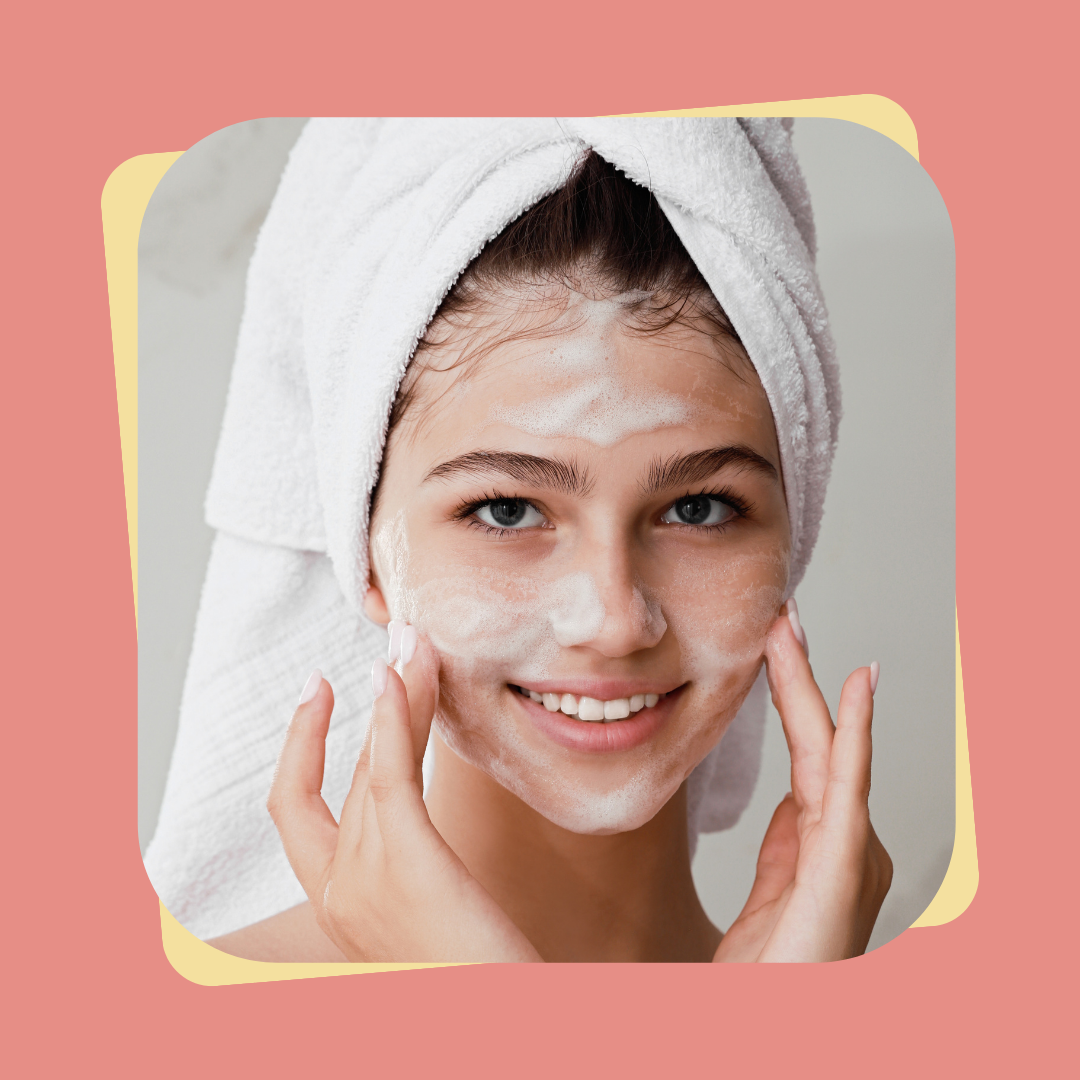
Tips for choosing a cleanser...
Look for cleansers labelled:
- Hypoallergenic (doesn’t cause allergies)
- Non-comedogenic (doesn’t clog pores)
Avoid cleansers with:
- Words like “scrub” as this is often too harsh for the skin
- Fragrance, if possible, as this can be mildly irritating
- A stripping feeling – if the skin feels tight and dry after cleansing, this is a sign that the cleanser may be too harsh and is stripping the skin of its natural oils
Step 2: slather – this is your moisturiser
The next step is a hydrating moisturiser to help replenish the skin after cleansing.
Your teen should use a pea-sized amount of moisturiser every morning and evening after cleansing.
Look for a moisturiser that is hypoallergenic and non-comedogenic.
Avoid moisturisers with fragrance as it can lead to irritation.
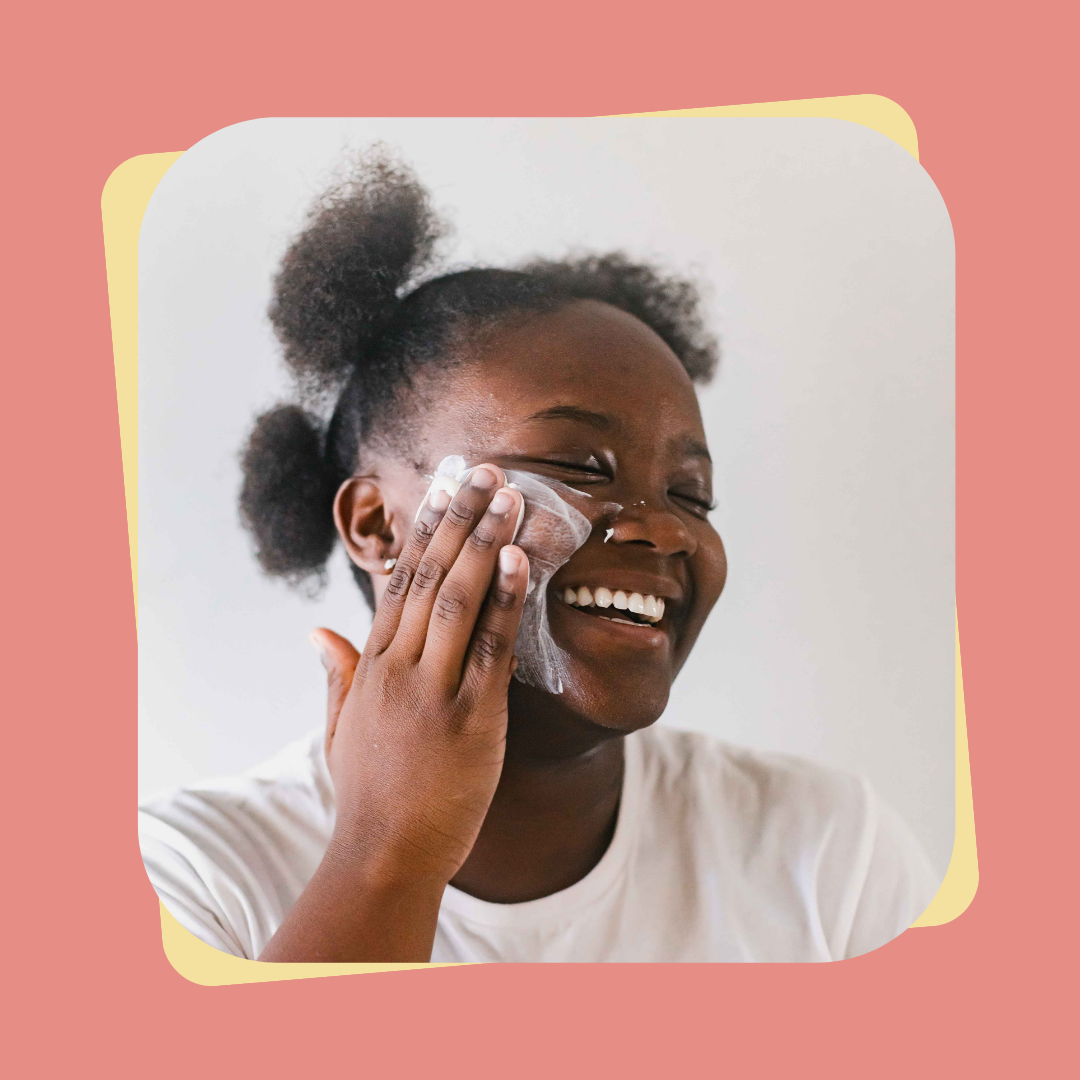
Step 3: sun cream – this is your protection
Sun cream is an essential step in the morning as the sun’s rays can cause sun damage and premature skin ageing.
It might sound unnecessary in less sunny climates, but the sun's rays are strong regardless of the weather.
Additionally, sunlight can darken any pigmentation already present on the skin, meaning if your teen has acne that leaves dark marks, skipping sun cream means the marks take longer to fade away.
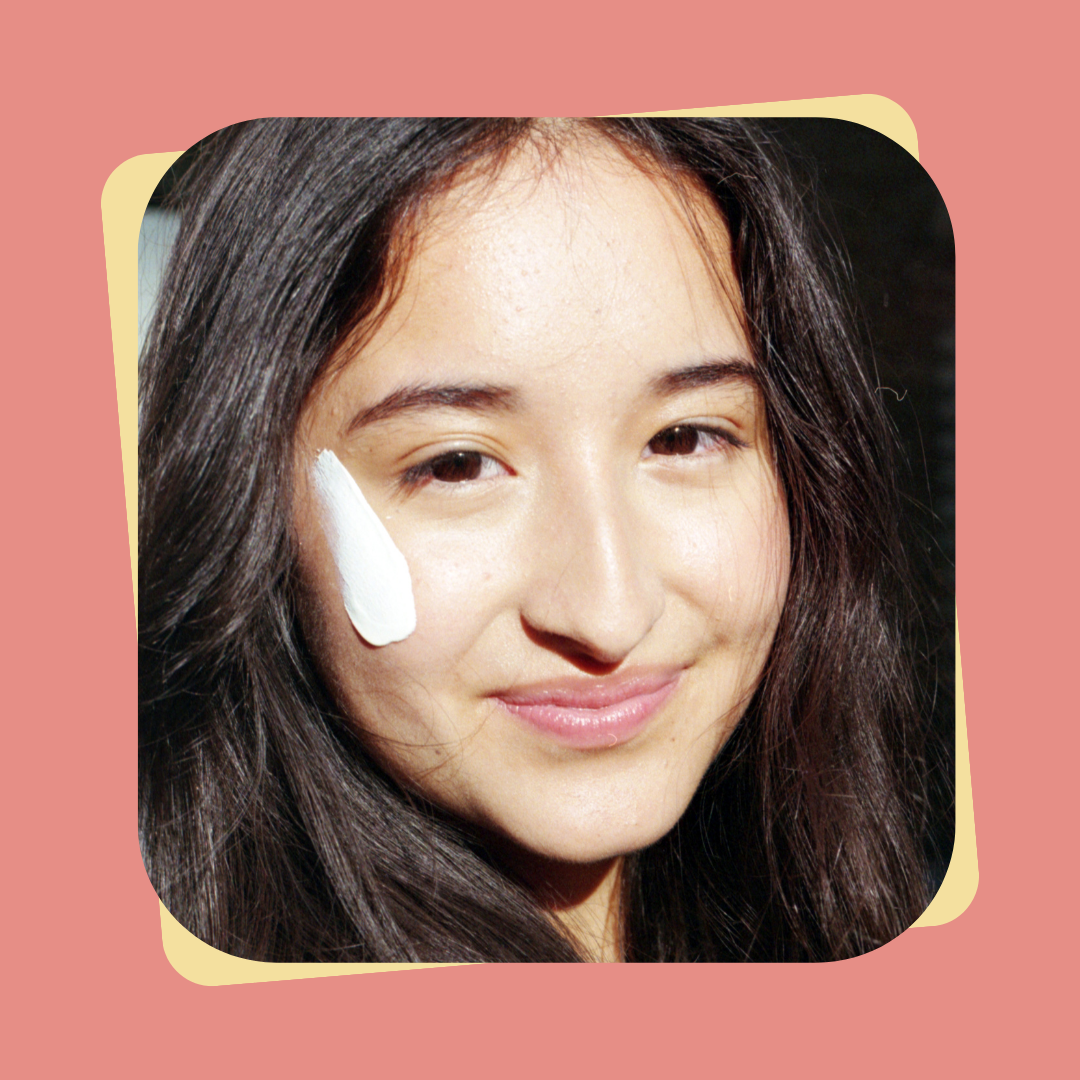
Tips for choosing sun cream:
- SPF: make sure it is at least SPF 30 with broad spectrum coverage, meaning it has both UVA and UVB protection
- Non-oily options: look for non-oily sun creams for acne-prone skin
- Higher SPF: if your teen has fair skin or skin that tends to burn rather than tan, go for SPF 50 for better protection
Ultimately, the best protection is staying out of the sun, but if your teen does choose to stay in the rays, ensure they have the right skin protection on their face and body to prevent damage.
This simple 3-step skincare routine should help keep your teen's skin balanced and healthy.
Dos of teen skincare routine
As a parent, it helps to guide your teen toward a consistent, gentle routine rather than overloading them with too many products.
Teen skin is sensitive and still developing, so the goal should be balance, not perfection.
Here are some skincare dos to keep in mind:
- encourage daily cleansing, moisturising, and SPF use
- products that are hypoallergenic and non-comedogenic
- remind them to test new products before full use
- help them understand that results take time
- make skincare part of a healthy daily habit – like brushing teeth
Don’ts of teen skincare routine
Many skincare “don’ts” are inspired by viral social media advice, which isn’t always evidence-based.
Teens might be tempted to try harsh treatments, thinking it will speed up results, but this often backfires.
Here are some don’ts you can gently steer your teen away from:
- using intense exfoliators, scrubs, or astringents
- following TikTok trends without checking credibility
- mixing too many active ingredients at once (like retinol + acids)
- popping or picking at spots – it can cause scarring
- skipping sunscreen, even on cloudy days
What do parents need to do to ensure the best skincare for teens?
If your teen has any other skin concerns that are not improving, it is best to visit a pharmacist in the first instance to get tailored help and guidance.
And if you notice your teen becoming overly critical of their appearance due to skincare challenges, this guide on spotting low self-esteem in teenagers may help.
On top of that, here are some things that can help you along the way:
- listen to your teen’s concerns without judgment
- help them pick simple, skin-safe products
- use trusted sources (like pharmacists or NHS-backed info) to guide choices
- talk openly about self-image, beauty pressures, and skin changes
- remind them that healthy skin isn’t perfect skin, and that’s okay
You can also introduce your teen to a trusted community where she can receive expert-verified information, someplace where she can ask questions, even anonymously.
If that sounds like something your teen would love, introduce them to luna.
luna isn’t just another app, it’s a safe space created specifically for teens, offering expert-backed advice and real answers to the questions they might be too shy to ask you.
From skincare to body changes and mental health, luna helps your teen navigate it all without the pressure and noise of social media trends.

How we created this article:
luna's team of experts comprises GPs, Dermatologists, Safeguarding Leads and Junior Doctors as well as Medical Students with specialised interests in paediatric care, mental health and gynaecology. All articles are created by experts, and reviewed by a member of luna's senior review team.
Sources:
AAD "Skincare on a budget" | Accessed 14.05.25
https://www.aad.org/public/everyday-care/skin-care-basics/care/skin-care-budgetKids Health "Teen skin tips" | Accessed 14.05.25
https://kidshealth.org/en/teens/skin-tips.htmlAAD “Face washing 101” | Accessed 14.05.25
https://www.aad.org/public/everyday-care/skin-care-basics/care/face-washing-101We'd love to keep in touch!
Sign up to our parent newsletter for emails on the latest teen trends, insights into our luna community and to keep up to date
By signing up, you are agreeing that we can use your email address to market to you. You can unsubscribe from marketing emails at any time by using the link in our emails. For more information, please review our privacy statement.